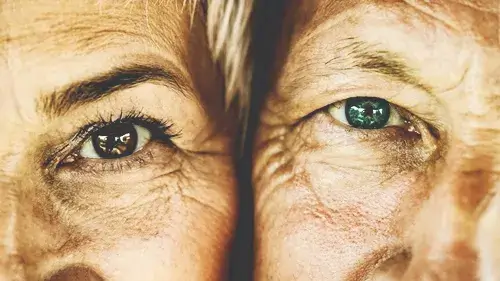Every Age. Isn’t it fascinating how quickly the years fly by? It’s like a speedometer constantly ticking upwards, a constant reminder of time’s relentless march.
And with that, the age-old question arises: can we truly live without succumbing to illness and the typical effects of aging?
Or is it merely an unattainable fantasy?
Can we somehow extend these fleeting years, filling every moment with health, vitality, and joy?
For centuries, humanity has yearned for a long and high-quality life. The ancient Greeks, for instance, philosophized that “to die at 70 is almost the same as dying in the cradle,” vividly reflecting this enduring desire.
Thanks to advancements in science and medicine, the average human life expectancy has significantly increased, reaching 65-80 years or even more in developed countries.
However, even when reaching these statistical averages, many individuals face diseases and ailments that significantly diminish their quality of life, especially in their later years.
Therefore, the very idea of living a long, healthy life, free from premature illness and aging, still seems fantastic, even utopian, to many. But as we delve deeper, we discover that it’s not about magic; it’s about knowledge, conscious action, and lifestyle choices.
Every Age, Evolution of Understanding.
From Fate to Choice.
In previous generations, people often lacked understanding of their body’s complex processes and true needs. They didn’t comprehend how the body functioned or how to properly maintain it for long-term, flawless service.
This lack of knowledge frequently led to severe illnesses, premature aging, and early death. Diseases were seen as fate, not as consequences that could be influenced.
Many still mistakenly believe that humans cannot live without getting sick and growing old. They accept aging and its associated ailments as an inevitable punishment or an unchangeable law of nature.
However, modern science, especially medicine, biology, and genetics, has accumulated an immense wealth of knowledge that allows us to better understand aging processes and the causes of diseases at cellular and molecular levels.
This means that we now possess the tools to actively care for our health and influence our lifespan and quality of life. We can not only treat diseases but, more importantly, prevent them.
Longevity is indeed possible.
Pillars of Healthy Longevity.
Achieving this healthy longevity, however, requires more than just desire. It demands a conscious and purposeful lifestyle based on specific fundamental principles.
These principles aren’t new discoveries; many have been known for ages, but today, they are scientifically substantiated and understood. Let’s explore them in detail:
Proper, Full Breathing.
Breathing is a fundamental life process, yet we often breathe shallowly, using only a fraction of our lung capacity.
Full, deep diaphragmatic breathing ensures sufficient oxygen supply to all cells, which is crucial for their optimal function and energy production.
Deep breathing also activates the parasympathetic nervous system, reducing stress, a major contributor to premature aging and disease. Regular breathing practices can significantly improve your well-being and your body’s ability to regenerate.
Active Muscle Movements Aimed at Capillary Cleansing.
Movement is life. Regular physical activity is vital. This includes not only intense workouts but also simple, everyday movements and physical labor. Movement increases the circulation of blood, lymph, and other bodily fluids, delivering nutrients and oxygen to tissues and facilitating waste removal.
Capillary function is especially important, this network of tiny blood vessels surrounds every cell in the body. Movement helps keep capillaries elastic and permeable, ensuring efficient “service” to cells.
A sedentary lifestyle, conversely, promotes capillary narrowing and clogging, which can lead to oxygen deprivation in tissues and various health problems. Combine aerobic activities (to strengthen the heart), strength training (to preserve muscle mass and bone density), and flexibility exercises (to maintain joint health).
A Straight, Flexible Spine.
The spine is our body’s central axis and the “highway” of the nervous system. Its condition directly affects the function of all organs and systems.
A stiff or deformed spine can compress nerves, disrupting signal transmission and negatively impacting organ functions. A straight and flexible spine not only improves posture and reduces pain but also promotes better circulation and nervous system activity.
Regular stretching exercises, yoga, Pilates, or simply walking with proper posture can help keep your spine healthy.
Rational Nutrition.
We are what we eat. Nutrition is the foundation for building and regenerating new cells, tissues, and organs. Rational nutrition means the body receives sufficient amounts of all necessary macronutrients (proteins, carbohydrates, fats) and micronutrients (vitamins, minerals), as well as fiber.
Focus on unprocessed, natural foods: plenty of fruits and vegetables, whole grains, healthy fats (nuts, seeds, avocados, olive oil), and high-quality proteins.
Avoid excessive sugar, salt, saturated and trans fats, and highly processed foods. The quality of nutrition is more important than the quantity.
Drinking Up to 2.5-3 Liters of Fluid Daily.
Water is an essential component of our body, making up most of its mass. Water participates in almost all physiological processes: nutrient transport, waste elimination, body temperature regulation, joint lubrication, and skin elasticity maintenance.
Even mild dehydration can cause fatigue, headaches, and impair cellular function. Drink pure water and herbal teas. Avoid sugary drinks, which contain empty calories and can promote inflammation.
Sufficient Sleep, At Least 8-9 Hours Daily.
During sleep, the body carries out crucial renewal, repair, and regeneration processes. The immune system is strengthened, hormone activity is regulated, tissues are renewed, and memory is consolidated.
Chronic sleep deprivation is associated with an increased risk of heart disease, diabetes, obesity, depression, and contributes to premature aging. Try to maintain a regular sleep schedule and ensure a dark, quiet, and cool bedroom.
Physiological Balance in the Functioning of the Entire Organism.
Its Cells, Tissues, Organs, Systems.
This point can be summarized by the term “homeostasis.” It’s the body’s ability to maintain a stable internal environment regardless of external changes. All the previously mentioned points, breathing, movement, nutrition, hydration, sleep are aimed at preserving this balance.
When homeostasis is disturbed for extended periods (e.g., due to chronic stress, poor diet, or lack of sleep), it leads to cellular dysfunction, tissue damage, and disease development.
Positive Emotions.
The mind-body connection is undeniable. Chronic stress, negative thoughts, fear, and resentment can create physiological changes that promote inflammation, weaken the immune system, and accelerate aging processes (e.g., increased cortisol levels).
Conversely, positive emotions, joy, gratitude, love, optimism, the ability to forgive, and coping with difficulties strengthen the immune system, improve heart health, and promote a longer, healthier life.
Consciously cultivate a positive outlook on life, practice gratitude, find joy in small things, and build strong social connections.
Serious, Noble Goals That Awaken the Great Energy of Creativity.
A life with purpose is a life with motivation. Setting goals, a continuous desire to learn, curiosity, the desire to be pleasant, useful, and necessary to others all this generates positive life energy.
It prevents boredom and apathy, which can contribute to physical and mental deterioration. Engaging in society, volunteering, learning new skills, or pursuing a hobby can provide a deep sense of satisfaction and meaning, which is closely linked to better health and longevity.
These nine points form a holistic approach to health. They are not separable; they all work together to maintain the body and mind in optimal condition. Life expectancy and its quality largely depend on one’s choices and attitude.
Overcoming Obstacles.
Mindset and Nutrition.
Sometimes we hear about “incurable diseases.” However, often the problem isn’t the incurability of the disease itself, but rather a lack of knowledge or insufficient understanding of the diagnosis, a lack of insight into the true causes of the illness (which often lie in lifestyle), and the absence of effective means and methods to eliminate them based on addressing these root causes.
Scientific progress continuously expands our possibilities, but the foundation is learning to take preventive care of ourselves.
Another significant obstacle on the path to healthy longevity is our own mind, skepticism, doubts, and fears. These negative emotions can paralyze any effort and negate even the best intentions. If you don’t believe you can live long and healthily, your body and mind will respond accordingly to that belief.
If you want to achieve the desired results and perhaps celebrate your hundredth birthday (or more!) with a clear mind and a healthy body, first, don’t let the thought that old age is synonymous with illness and infirmity take hold.
Never allow the idea that aging is solely about deterioration. Believe that it’s entirely possible to maintain health and vitality even at a respectable age!
If you expect illness as an inevitable companion of old age and mentally visualize that your health condition “should” deteriorate with the years, then such an attitude is not only incorrect but also dangerous.
Such thoughts are a self-fulfilling prophecy; they paralyze your desire to succeed and actively work for your health. Change your mindset.
Tip: Think of aging as a time of maturation and wisdom that can be just as fulfilling and happy as any other stage of life, if properly cared for.
Returning to the physical aspects, many scientists are studying various aging theories. One of them, which you mentioned, is related to the accumulation of unnecessary molecules, such as certain protein molecules, in the body.
The theory posits that these molecules can disrupt normal cellular function, creating a kind of “waste heap” that clogs cell membranes and hinders metabolic processes.
The Role of Protein and “Anti-Aging” Foods.
Overloading the body with unnecessary (or poorly digested) proteins can contribute to cellular aging and damage.
Therefore, especially after the age of 25, and even more so after 45, when the work of the endocrine glands (which regulate many metabolic processes) gradually reconfigures, individuals should be particularly careful about the quantity and type of protein consumed.
Remember that plant-based proteins (found in legumes, nuts, seeds, grains) in their natural form are generally easier to digest and absorb, and they come packaged with fiber and other valuable nutrients.
Animal proteins (meat, dairy products, eggs) are also valuable, but their consumption should be limited and consumed in moderation – for example, 1-2 times a week, rather than at every meal.
Lifestyle Wisdom.
This approach can help reduce the body’s “pollution” and lighten the load on the digestive system. Also, don’t forget about a short break for the digestive system once a week, such as a 24-36 hour “mini-fast” or a light cleansing day, drinking only water or herbal teas (consulting a doctor if you have health problems).
From the perspective of easy digestion and additional nutrient benefits, plant-based proteins are often considered the best for humans.
They are found in almost all fruits, vegetables, herbs, nuts, and seeds (sunflower, pumpkin, flax, chia, etc.). By diversifying plant-based foods in your diet, you provide your body with a wide spectrum of amino acids, which are the building blocks of proteins.
Foods for a Youthful You.
So, what else needs to be considered for a long and healthy human life? As mentioned, everything depends on your mood, lifestyle, thoughts, and, of course, nutrition. Is it true that “anti-aging” foods exist?
Anti-Aging Foods.
It turns out, yes! While there’s no magic food that stops time, certain foods, due to their rich content of antioxidants, vitamins, minerals, and other bioactive compounds, are scientifically proven to help protect cells from damage, reduce inflammation, and slow down certain signs of aging at the cellular level.
This has been repeatedly confirmed by doctors, research, and long-lived individuals themselves, whose diets often consist predominantly of natural, nutrient-rich foods.
Regularly incorporating these foods into your daily diet in moderation can significantly improve overall health, reduce the risk of chronic diseases, and truly slow down both the visible and invisible signs of aging.
Aging is an inevitable biological process, but we can significantly influence how quickly and with what consequences it occurs.
Let’s look more closely at some of these “special anti-aging foods” you mentioned and why they are valuable:
Cabbage.
Cabbage and other cruciferous vegetables (broccoli, cauliflower, Brussels sprouts) are rich in vitamins C and K, fiber, and antioxidants, as well as sulforaphane, which has anti-cancer properties – crucial, as cancer risk increases with age.
Cabbage also contains calcium and other minerals that strengthen bones, protecting against osteoporosis.
Salmon.
This fatty fish (and other fatty seafood like mackerel, herring) is an excellent source of omega-3 fatty acids.
Omega-3s are powerful anti-inflammatory agents that help reduce internal inflammation in the body a root cause of many chronic diseases, including arthritis, arthrosis, and cardiovascular diseases.
Salmon also contains high-quality protein and vitamin D, important for bone health and the immune system. Unlike red meat, salmon contains fewer saturated fats.
Yogurt.
Natural, plain yogurt (and other fermented dairy products like kefir) is a great source of calcium, necessary for strong bones and teeth. Additionally, yogurt contains probiotics – beneficial bacteria that improve gut health.
A healthy gut is essential for nutrient absorption, immune system function, and even mood regulation, as a large portion of serotonin (the happiness hormone) is produced in the gut.
Blueberries.
These tiny berries are a superfood rich in antioxidants, especially anthocyanins, which give them their vibrant blue color.
Antioxidants combat free radicals that damage cells and contribute to aging. Blueberries are particularly known for their beneficial effects on brain health, improving memory, concentration, and slowing cognitive decline often seen with age.
Kidney Beans.
Legumes in general (beans, lentils, peas) are an excellent source of plant protein, fiber, B vitamins, iron, zinc, and other minerals.
They are also rich in antioxidants. Kidney beans contain a range of vitamins and minerals that help maintain skin and tissue health and promote regenerative processes at the cellular level. Their high fiber content helps regulate blood sugar and maintain a healthy gut microbiome.
Green Tea.
Green tea is a powerful antioxidant due to its high content of polyphenols, especially EGCG (epigallocatechin gallate). EGCG has proven strong anti-inflammatory, anti-cancer, and anti-aging properties.
Regular green tea consumption can improve metabolism, promote heart health, and protect the brain. The zinc in green tea does indeed improve hair and nail condition.
Garlic.
Garlic is a natural “superstar” in boosting immunity. Allicin, the main active compound in garlic, possesses powerful antibacterial, antiviral, and antifungal properties.
Regular consumption of garlic can help reduce the frequency of colds and other infections. It also has a positive effect on the cardiovascular system, helping to regulate blood pressure and cholesterol levels.
Carrots.
Carrots are famous for their high beta-carotene content, which the body converts into vitamin A. Vitamin A is vital for vision, healthy skin and mucous membranes, and immune system function.
Carrots also contain vitamins C, K, E, PP, as well as potassium, iron, copper, phosphorus, and magnesium. Beta-carotene is also a powerful antioxidant.
For better absorption of vitamin A, carrots (or their juice) should be consumed with a small amount of fat (oil, avocado, nuts, or, as you mentioned, even mayonnaise, though healthier alternatives are recommended).
Wheat Sprouts.
Wheat sprouts and other young cereal grasses (barley grass, rye grass) are incredibly rich in vitamins, minerals, enzymes, amino acids, and chlorophyll. They are powerful cleansing agents that can help normalize metabolism, promote detoxification, and restore cellular and tissue function.
Their consumption can improve energy levels and overall well-being.
Tomatoes.
Tomatoes are the primary dietary source of lycopene – a powerful antioxidant that gives them their red color.
Lycopene is particularly effective in combating free radicals and is associated with a reduced risk of certain cancers (especially prostate) and heart disease. Interestingly, lycopene absorption improves when tomatoes are cooked (e.g., in soups or sauces) and consumed with a small amount of fat.
Red Wine.
Moderate consumption of red wine has been linked to better cardiovascular health and a longer lifespan. The main reason is resveratrol a polyphenol found in grape skins and red wine.
Resveratrol is a powerful antioxidant with anti-inflammatory properties. Studies suggest it can help protect blood vessels, reduce inflammation, and may influence certain aging mechanisms.
However, it’s crucial to emphasize “moderate consumption” excessive alcohol intake is detrimental to health. Resveratrol can also be obtained from red grapes, grape juice, blueberries, and peanuts.
These are just a few examples of many foods that can help maintain health and slow down aging processes. Remember, the key to success is a diverse, balanced diet rich in plant-based foods, not focusing solely on a few “superfoods.”
Your Power to Influence Aging.
Living without illness and aging? After all that’s been said, it’s clear that it’s not an impossible mission, but rather a journey that requires conscious choices and self-care every day. Nothing happens on its own.
To achieve this goal, you need to not only change your diet (although switching to kidney beans and enjoying moderate red wine might be a good start!) but also pay attention to your breathing, movement, sleep, spinal health, hydration, state of mind, and life purpose.
Don’t let skepticism and disbelief deter you from this path. Every healthy choice you make today a handful of blueberries eaten, a glass of water drunk, a short morning stretch, an hour of sleep you previously denied yourself, or a consciously positive thought is a step towards a longer, healthier, and more fulfilling life.
Start small, gradually incorporate these principles into your daily routine, and observe how your well-being and health transform. Aging is inevitable, but diseases are not. You have the power to influence how you age. Do it consciously and with joy!
Have a good day and a healthy, long life!







